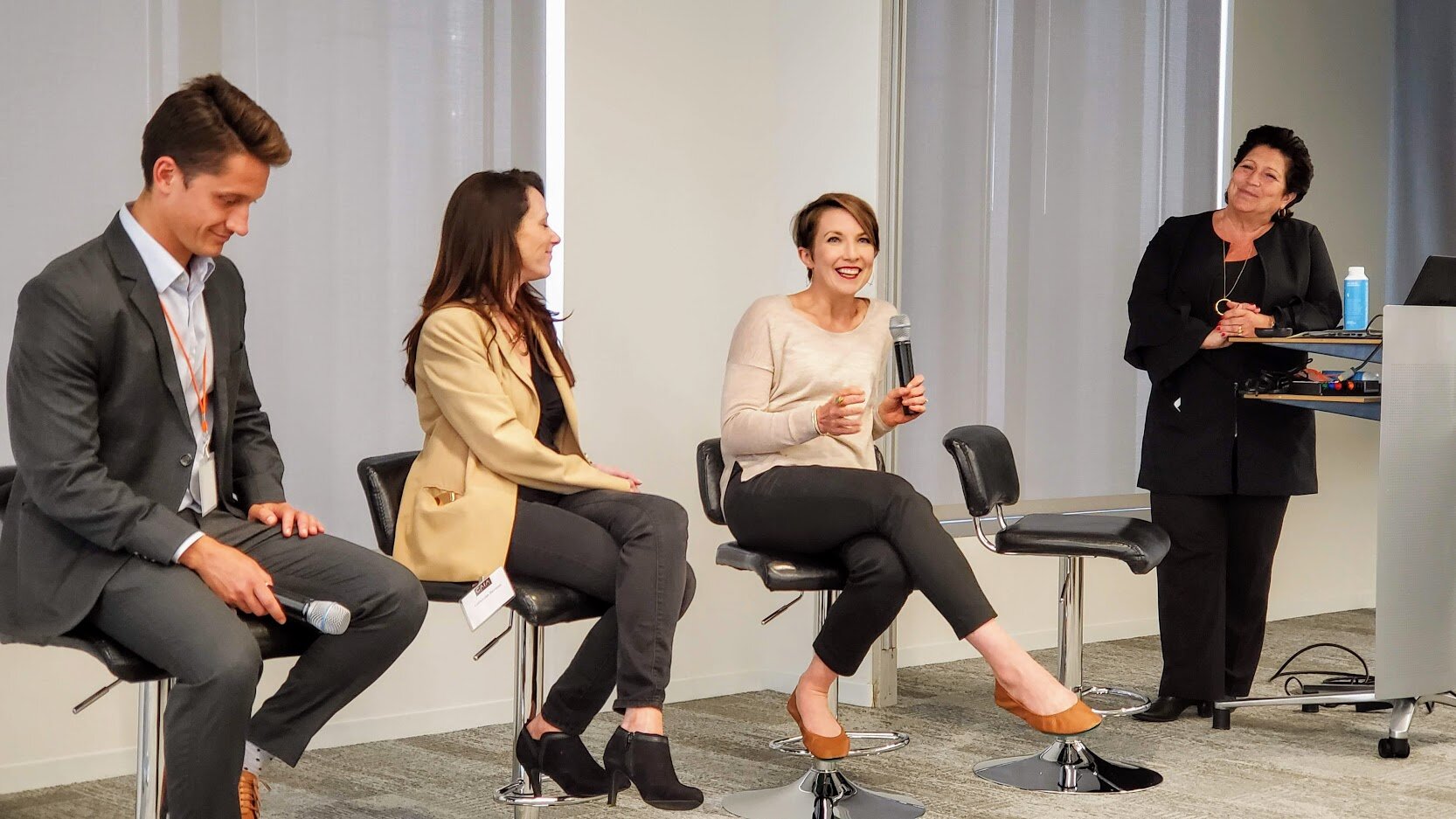Moderating a panel discussion that is actually interesting
I’m often asked how I started in public speaking. My first recollection of giving a “speech” to a group is from elementary school so I’m certainly naturally drawn to it. But it also takes diligence to create and deliver engaging, relevant content. One of the ways I got started speaking at industry conferences was by moderating panel discussions.
Moderating panels is a great way to get used to being on stage and presenting content to an audience. But if you’re new to moderating, the task can seem daunting. Here are my top tips for moderating a panel. I’ve added notes specific to impact and ESG investing in italics, but the format below works for any topic.
Prepare 1-3 weeks before the conference
Create an outline of the topics you want to cover. Err on the side of less topics so you have time to go deep in a couple of areas.
Host a planning call for your panel. Find a time that everyone can be on the call, so panelists get to know each other. On the call:
Ask panelists to introduce themselves to each other.
Tell panelists how you’ll ask them to introduce themselves on stage (see below for more info).
Explain your outline to the panel and ask for volunteers to talk about each topic.
Ask panelists if there are other topics they specifically want to add.
Ask panelists to each give you a question they would like to be asked.
After the call, prepare a general outline including the questions that panelists should be prepared to answer. These should be your own questions mixed in with the question each panelist wanted you to ask them. Share the outline with your panelists in a document with the room name, date, and time of the panel at the top of the page. Though you’ll have to improvise on stage some, it helps to have everyone prepared for the basics.
Remember: Not every panelist has to talk about every topic or answer every question. A good panel is a robust discussion with professional differences of opinion, not a series of carbon copy interviews.
Panel
Be engaging right out of the gate. Ditch the tired intros where each panelist recites their professional bios. Instead, ask panelists to say their name, where they work, and ask for a topic-relevant personal anecdote. On an impact Investing panel, I ask panelists to tell me their impact investing a-ha moment. (I also ask this question in every interview I do in my newsletter so people expect it if they know me.)
Poll the audience on their level of knowledge on the topic. Define 3 or 4 levels on a slide and have the audience raise hands for the level they identify with. This will help you and your panelists curate answers to knowledge level of your audience, and it let’s the audience know that you have created this panel with them in mind. For example, if I am speaking with financial advisors about ESG I ask them to identify if they specialize in ESG investing, do it by request only, or are not doing it yet and here to learn.
Give definitions of terminology you’ll be using so everyone is on the same page. For impact investing and ESG discussions, these are the definitions I use.
Before you start into the discussion with your panelists, ask for three questions from the audience. Tell them you and panelists will try to incorporate answers in your discussion. Write down the questions and bring them up if and when appropriate. Asking for questions up front engages your audience and allows for a bit of Q&A even with a short panel.
Ask the questions from your outline. Foster discussion and conversation. Feel free to cut off panelists who are going too long or losing the audience’s attention. Your job as moderator is to make this time valuable for the audience. Help your panelists do that by being a strong moderator.
When you are close to the end of your allotted time, or ready to switch to Q&A, ask each panelist to give one suggestion for audience members to do "tomorrow back at the office." On ESG and Impact panels, I usually suggest subscribing to a newsletter for continued learning, and suggest my newsletter- Connected Investing, ImpactAlpha, and the Bloomberg Good Business roundup email. Once each panelist has made a suggestion, ask the audience to choose one of those items, and if they are interested in continuing down this road, commit to doing their chosen action item "tomorrow at the office."
If there’s still time, facilitate Q&A. Remind audience that you’re around for discussion at the networking events and to please use the Q&A time to ask questions of the distinguished panelists (no rambling statements at the mike!)
Remember, enjoy yourself and have a good time. Your enjoyment helps your panelists relax and your audience will stay engaged and listening.
WOMEN ADVISER SUMMIT SF 2018
CAIA LOS ANGELES IMPACT EVENT MAY 2019
MORNINGSTAR INVESTMENT CONFERENCE MAY 2019


